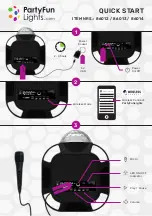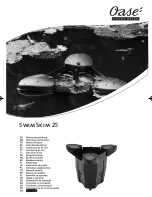Rubicon
2
Manual
B. TRIANGLE OUT
- Outputs a Triangle wave.
C. SAWTOOTH OUT
- Outputs a Sawtooth wave.
D. DOUBLE SAWTOOTH OUT
- Outputs a Double Sawtooth wave, which is double the
frequency of a standard sawtooth.
E. ZIG ZAG OUT
- Outputs a Zig Zag wave.
F. PULSE OUT
- Outputs a Pulse wave of the type selected by the PULSE TYPE switch,
and with a width set by the PW knob (and/or PWM CV input).
NOTE: Rubicon supports the entire range of possible pulse widths, meaning it can have
a pulse width as narrow as 0% at one extreme, and as wide as 100% at the other. At
such extremes, the wave is essentially a DC source, meaning you will no longer hear it.
Some oscillators limit these extremes to prevent the pulse wave from ever going silent,
but Rubicon
2
was created for sound designers. And sound designers often employ PW
modulation to exploit these extreme widths, allowing PWM to rhythmically gate the pulse
output. So if you ever patch a cable into the PULSE OUT jack and wonder why you don’t
hear anything, check to make sure the PW knob isn’t set to either extreme.
G. TRI STATE PULSE OUT
- Outputs a Tri State Pulse of the type selected by the
PULSE
TYPE
switch, and with a width set by the PW knob (and/or PWM CV input).
See
Understanding the Tri State Pulse
to learn more about Tri State Pulses.
H. SUB OUT
- Outputs a square wave that’s pitched either 1- or 2-octaves below the
primary oscillator. When the
SUB TYPE
switch is set to
SUB 1
, the sub oscillator
operates one octave below the primary oscillator. When the
SUB TYPE
switch is set to
SUB 2
, the sub oscillator operates two octaves below the primary oscillator.
I.
WARP OUT
- Outputs the WARP waveform, which results from adding (or subtracting) a
Tri State Pulse to any waveform present at the Rubicon
2
X IN
jack. If no waveform is
patched into the
X IN
jack, then the WARP waveform uses the Sub Oscillator for X. For
more information about the Rubicon
2
WARP circuitry, see the
WARP Controls
and
Understanding Warp
discussions elsewhere in this manual.
Page 19


















